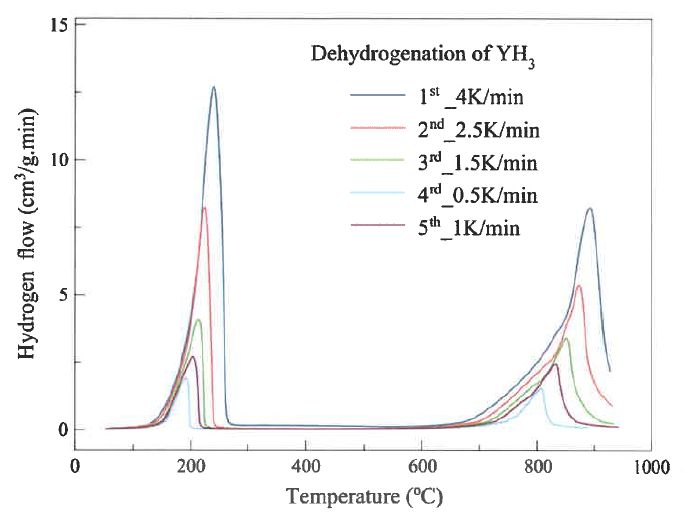
A. Prof. Suwarno from INSTITUT TEKNOLOGI SEPULUH NOPEMBER, Indonesia visited Institute for Energy Technology, Norway, between 24 September 2019 and 30 November 2019 as part of accomplishing a 3-months secondment.

Figure 1. Collaborating group of JUDRIDE4M0BILITY. Photo taken during the visit of A. Prof. Suwarno to IFE. From left to right Dr. R. Denys (HYSTORSYS). Dr. Jose Bellosta von Colbe (HZG), Dr. J. Eriksen (HYSTOSYS), Prof. V.A. Yartys (IFE), A. Prof- S. Suwarmo (ITSN).
During the visit, two parts of the study have been conducted; the first is kinetics study of AB2 alloy and the second is the kinetics study on the yttrium hydride as a rare earth material that is mostly studied as hydride materials due to the exceptional properties.
A queasy-isothermal experiment at a different temperature, i.e., 20,40,60, and 80°C, were conducted to study the mechanism of hydrogen desorption and absorption from AB2 alloys. The study of hydrogen absorption and desorption during gas charging and discharging is crucial for further improvement of the alloy for hydrogen storage application.
An example of result hydrogenation is presented in Figure 2 (above), and it can be seen the sample can be fully hydrogenated within 600 Seconds at 40°C. It also can be seen that hydrogenation can be fitted to nucleation and growth models. A result from three different temperatures can be used to obtain the activation energy of hydrogenation as shown in Figure 2 (below). Further study will be done to compare this result with other compositions to obtain the effect of chemical composition.

Figure 2. Hydrogenation kinetics in AB2 alloy which is fitted to nucleation and growth model (above). And fitting to obtain activation energy (below)
In Figure 3, an example of the result from non-isothermal dehydrogenation is presented. The results show that dehydrogenation under several heating-rates and the hydrogen desorption from YH3. The spectrum data show that the desorption mainly consists of two main events. These data can be used for modeling the dehydrogenation kinetic to understand the mechanism of phase transformation in the Y-H system. The modeling process is ongoing.

Figure 3. The hydrogen desorption traces from YH3.
One publication entitled
Thermal desorption spectroscopy studies of hydrogen desorption from rare earth metal trihydrides REH3 (RE=Dy, Ho, Er)
by S. Suwarno, M.V. Lototskyy, V.A. Yartys
has been prepared and submitted to J. Alloys and Compounds.

